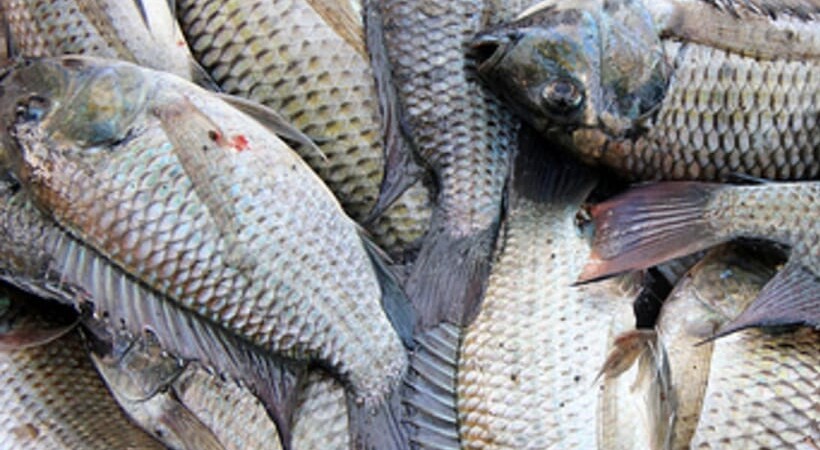

New disease outbreaks, such as COVID-19, influenza viruses, Ebola, SARS and the H1N1 virus, periodically affect humans. These affect either people or animals, and occasionally both. The H1N1 virus, for example, targets people and pigs.
Fish also suffer from diseases, many of them viral and some causing mortalities, such as the KHV virus that affects carp and cultivated koi.
Any fish that is farmed at high density suffers a certain amount of stress. Although there are systems in place to minimise this, a high density of animals confined to a small area, often at a high temperature, is a recipe for outbreaks.
Tilapia are prone to intestinal infections by Coccidia and other protozoan and cryptosporidian intestinal parasites.
The symptoms appear when the fish are a few days old: they include lethargy, and a general secondary attack by fungal and viral infections that eventually kill the fish, making a diagnosis difficult.
Interestingly, neither the redbreast tilapia (Tilapia rendalli) nor the Nile tilapia (Oreochromis niloticus) is (as yet) afflicted by these parasites. In the Far East, Streptococcus has been the main tilapia disease in recent years. Most hatcheries simply live with it, as there is no vaccine.
Research into one is underway, however. Clean rearing conditions, regular removal of sick fish, and breeding of ‘strep-resistant’ strains are the only methods to contain outbreaks. Up to now, strep has rarely caused wholesale mortalities of tilapia under commercial rearing conditions.
There is also Epizootic Ulcerative Syndrome (EUS), a disease caused by the water mould Aphanomyces invadans. It infects many freshwater and brackish fish species in the East, but has also been identified more recently in stocks in the upper Zambezi and Congo systems.
The fish develop red spots and lesions on the skin that form ulcers and extensive erosions filled with necrotic tissue and mycelium. This is followed by damage to the internal organs and death. The disease affects several species of fish, including tilapia.
While the threat seems intimidating, the best preventative measures are straightforward: clean rearing conditions, reduced over-crowding, and lack of stress in culture facilities. Fingerlings should be sourced only from reputable hatcheries.
At this stage, government legislation will not help, as there is little or no capacity to identify such diseases. It needs to be developed – urgently.
 Contact Jaguza Support
Contact Jaguza Support